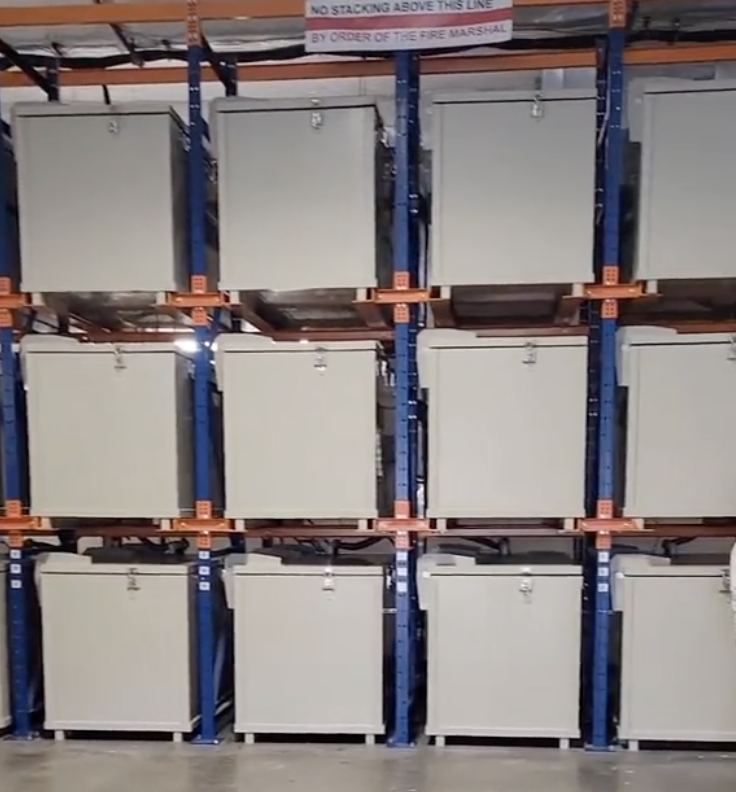On today's episode of Science Is Amazing, there's apparently a funeral home in Washington state that's turning human bodies into fertile soil.
"Welcome to Return Home. We are an end-of-life alternative to burial and cremation called 'terramation.'"
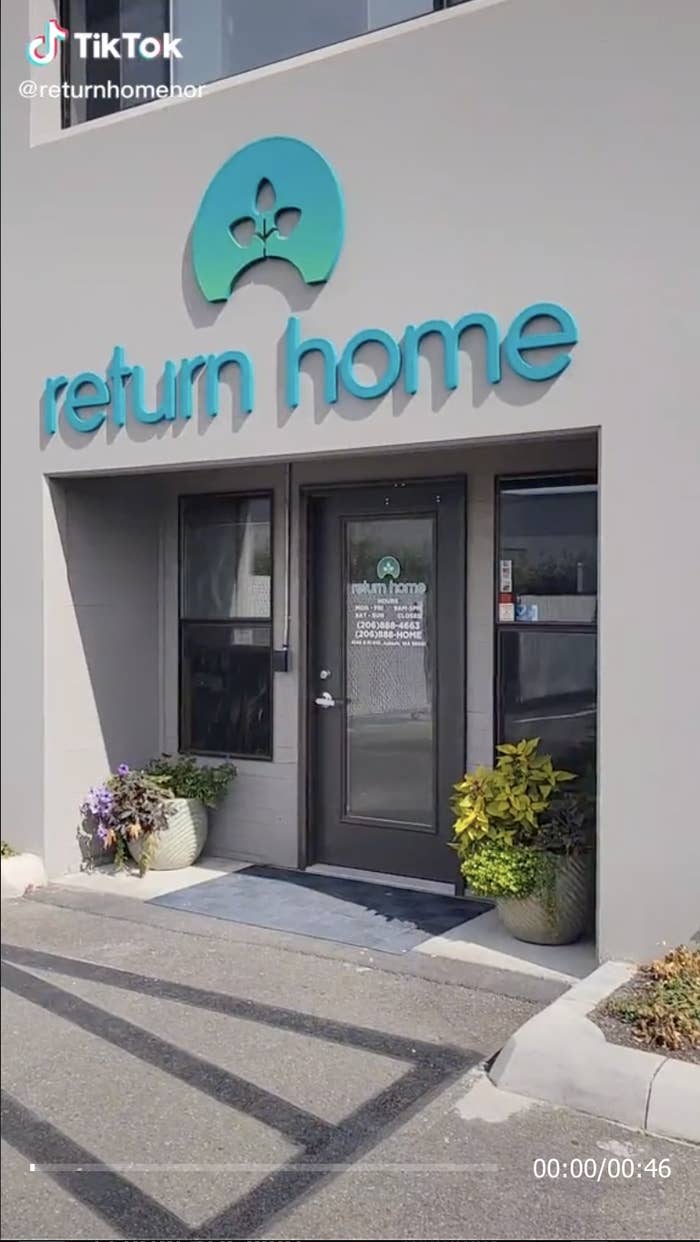
"Our process gently transforms human remains into rich, fertile soil to return to the earth. We are a first-of-its-kind, open-to-the-public terramation facility," the video continues.
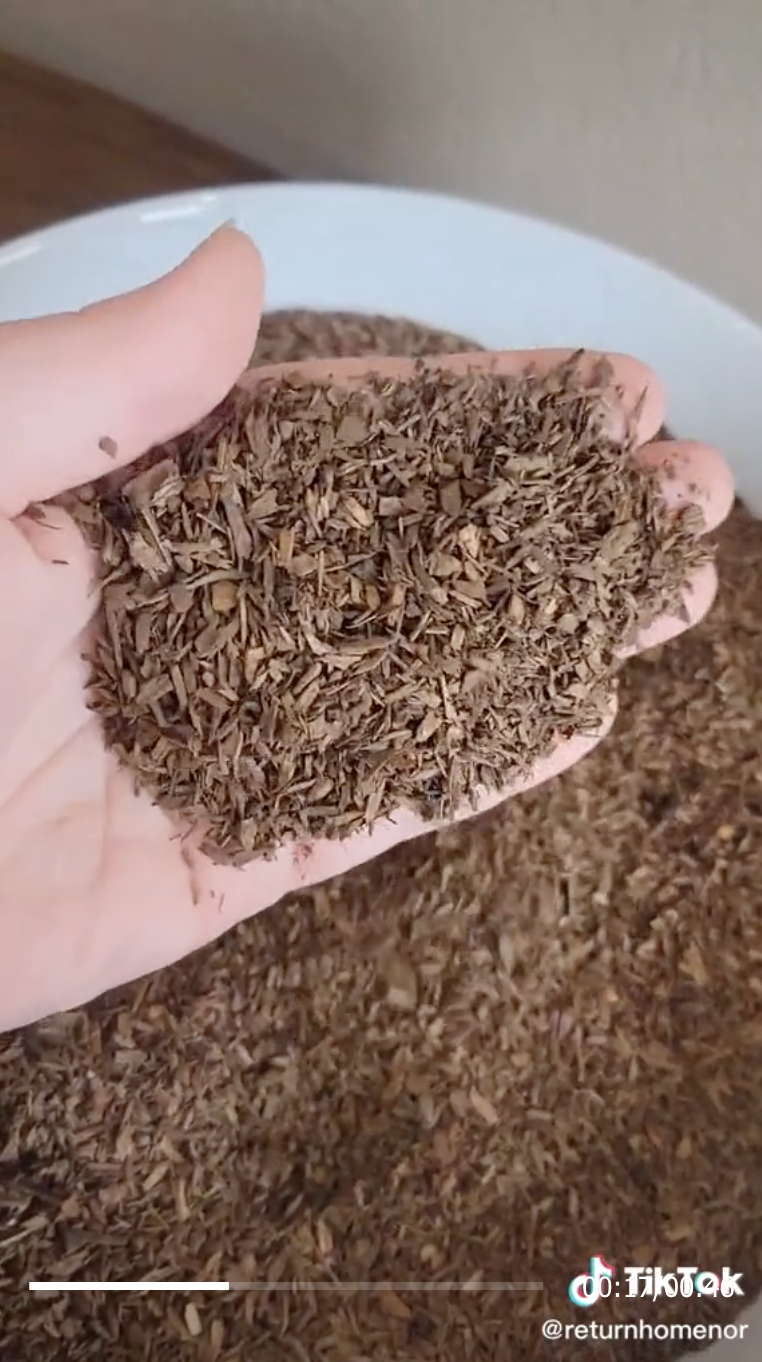
"So far, we have served 16 families and counting," she said. This number is now 60 at the time of this reporting. Families can "make an environmentally mindful end-of-life decision for their loved one," she continued.
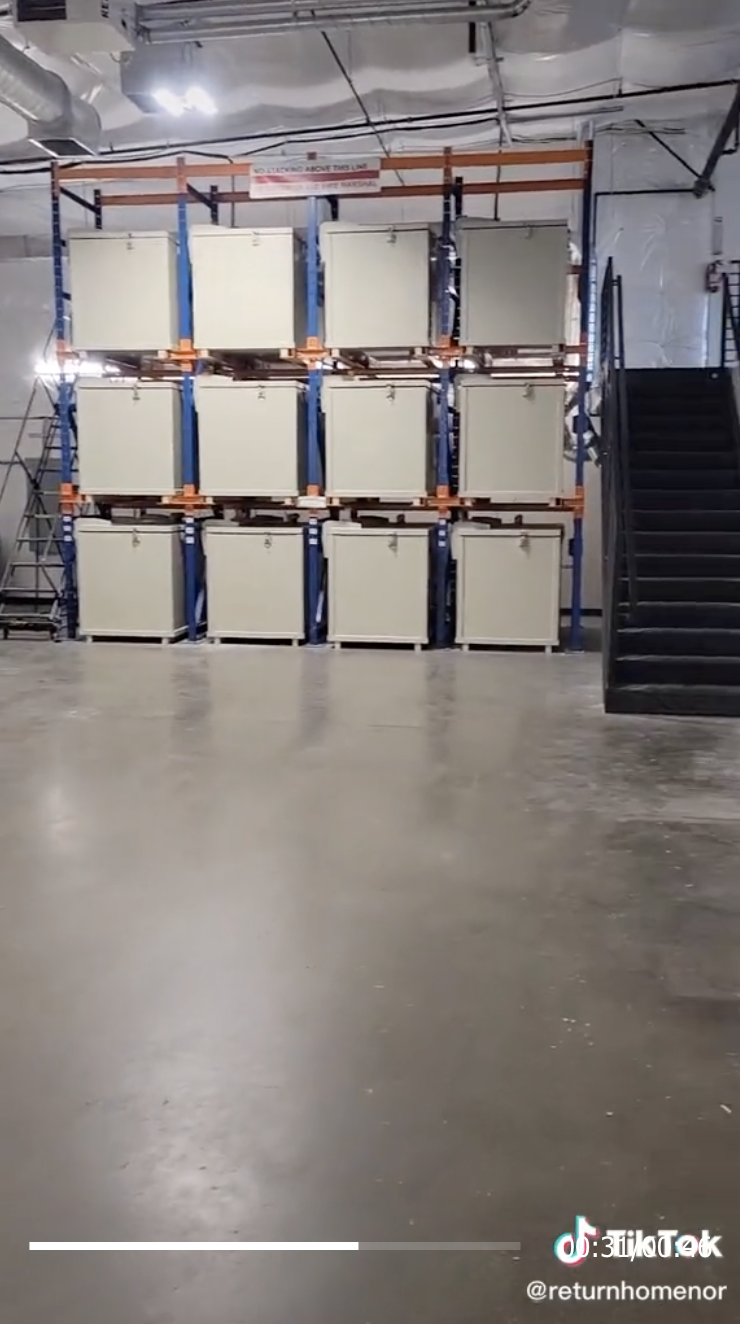
"Our mission is to make our service available to anyone interested and to question the existing funeral practices by slowing down the process, by letting nature take its course."

It turns out that Return Home is a relatively new funeral home — it only started its operations in 2021. That's because terramation — officially called natural organic reduction — just became legal in Washington state in 2019.
"Washington state became the first place in the world to legalize terramation," Return Home's client services manager, Katey Houston — also the voice of the funeral home's TikToks — told BuzzFeed. "Now, Oregon and Colorado and Vermont have legalized the process."
Before the official terramation process begins, families can choose to have what they call a "laying in ceremony," Katey said. "So think of that as, like, if you went to a normal funeral home and it would be an open casket, except people are in their vessels here."
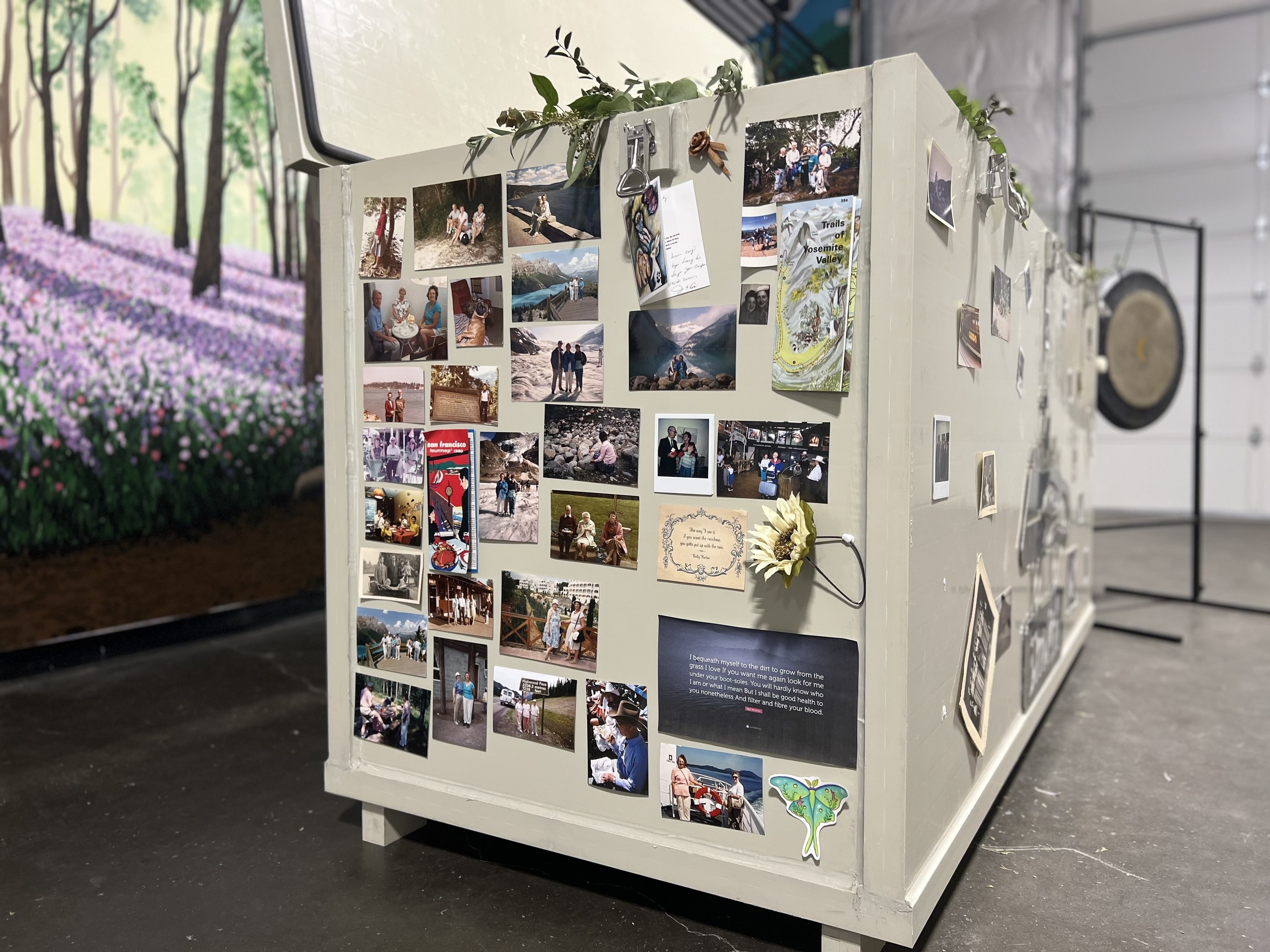
Once someone gets to the funeral home, Katey says, “We gently slide them over onto our body boards, where we're then able to make them a little ID tag that stays on until the terramation takes place."
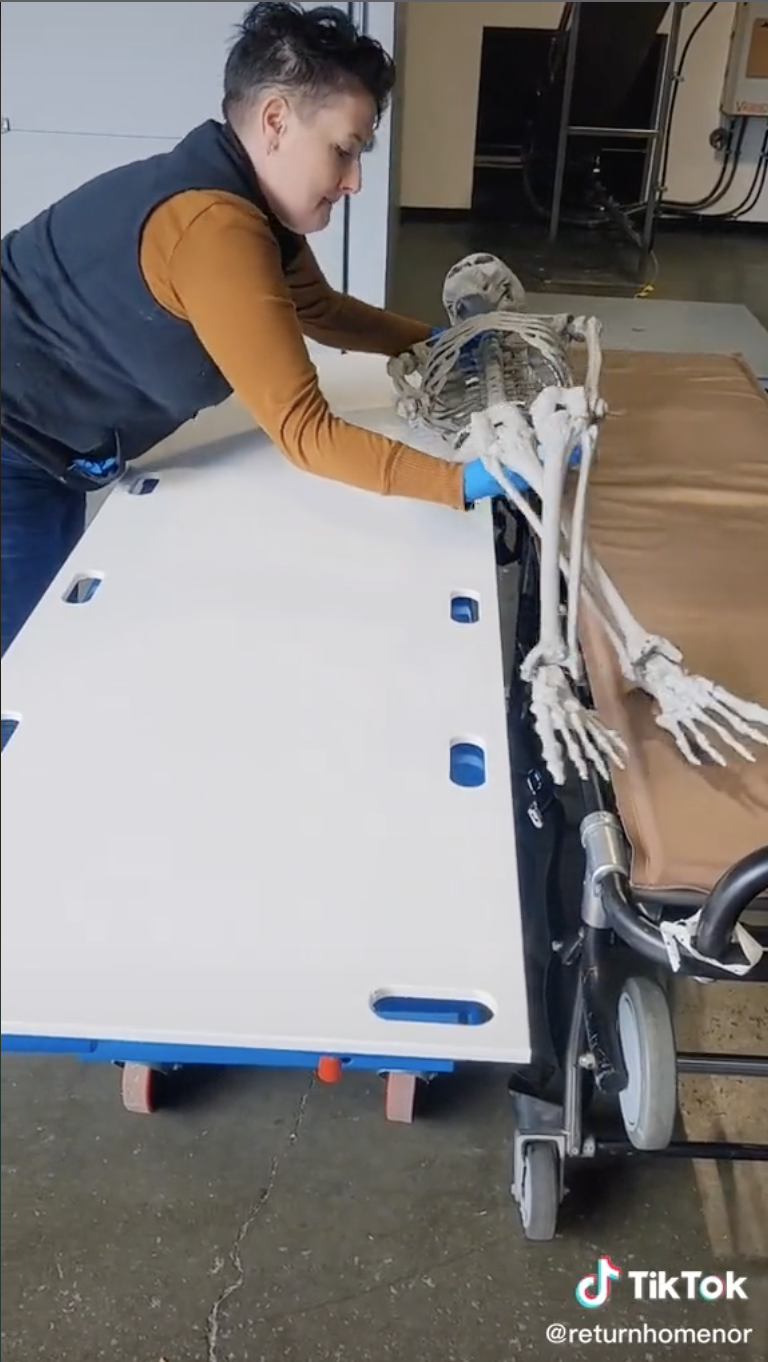
"We then put the label on the person's leg and continue by placing a head block under their head so if the family wants to view them, then they look good."
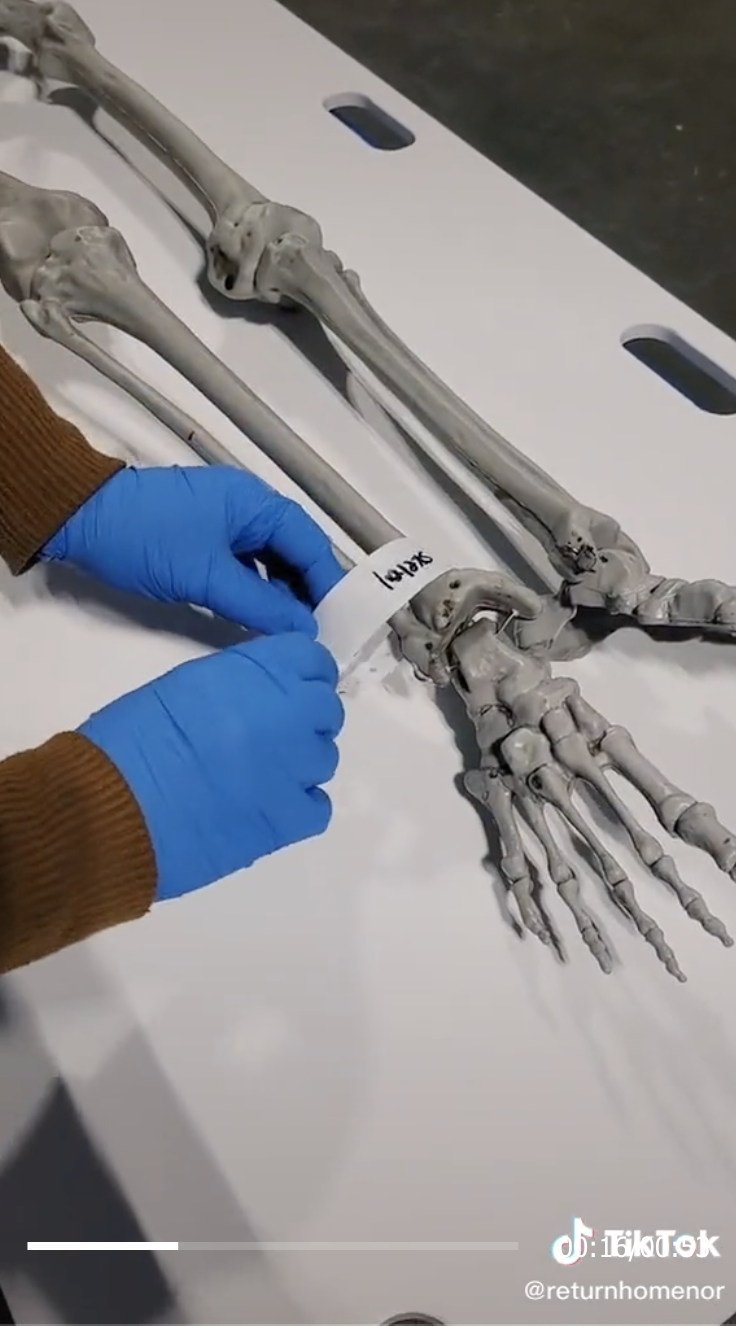
"Then, we give everyone a bath, because we think that they should go into their vessel clean."

"And then we dress them in a compostable garment that's custom made for them. After his bath, Mr. Skelly is ready to go into his vessel, where family members can then take time to put things like cards or even little jelly beans in with him," which would be the laying in process.
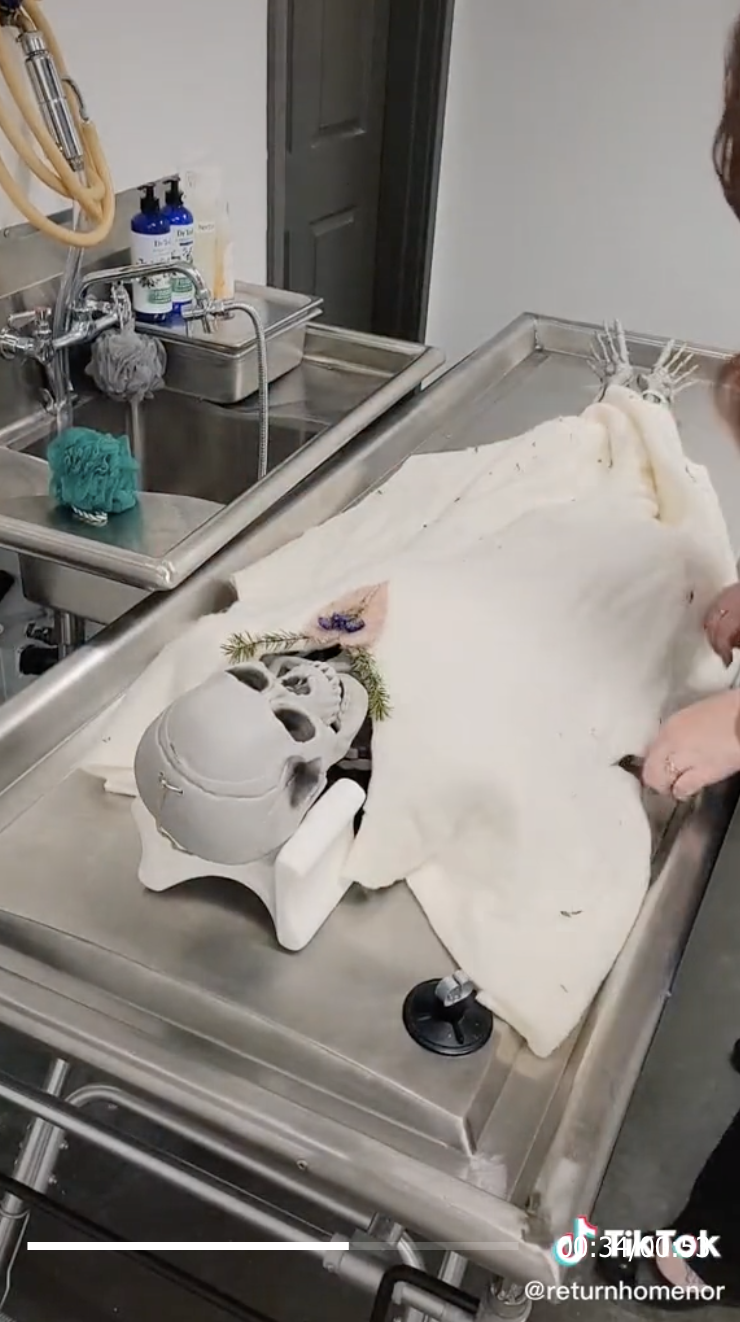
"Once they've had their time, we replace the remaining organics (straw, alfalfa, and sawdust) in the vessel, and it stays closed until the person is transformed into soil."
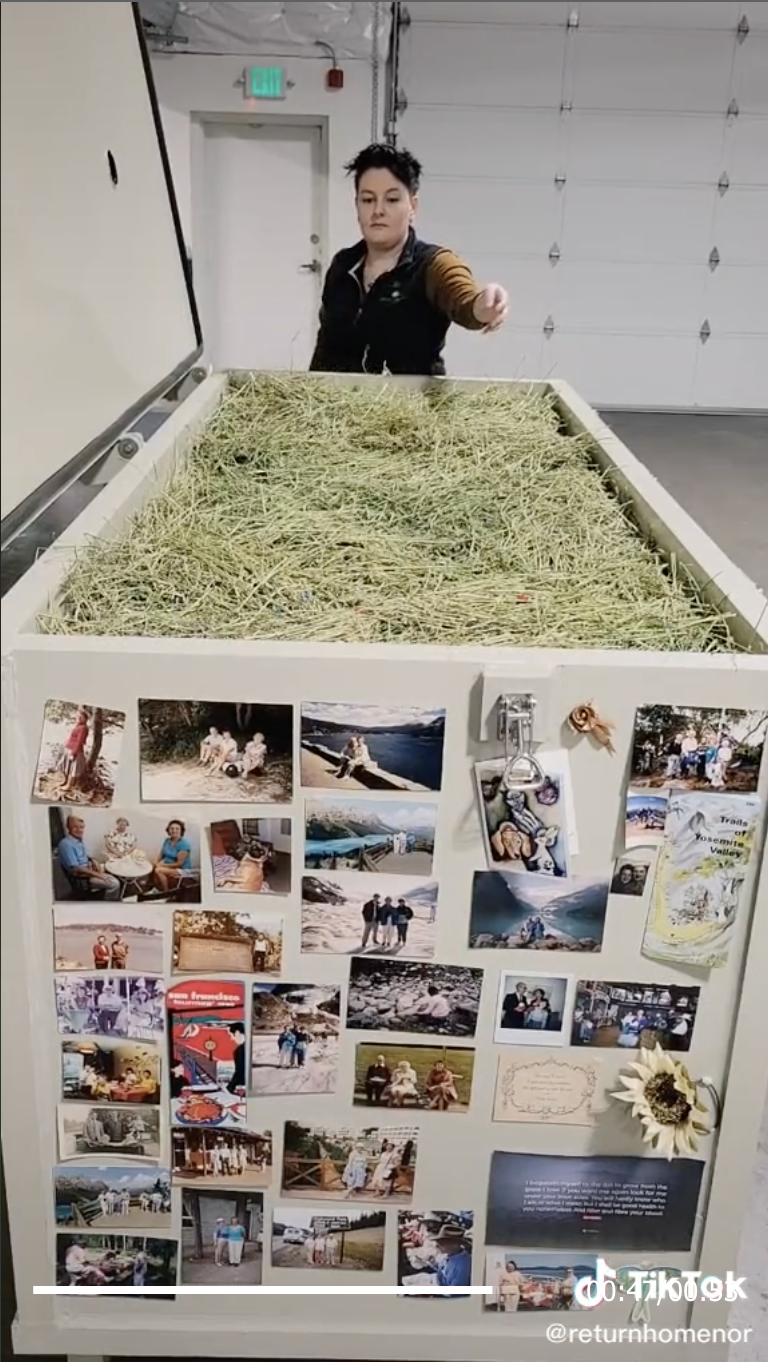
Once the vessel is closed, it sits in the front of the funeral home for 30 days, where family members of the deceased are allowed to visit as much as they want to. "Usually, the hardest part of the grieving process is physically never being near your person again," Katey said. "But this way, you are slowing down that physical separation from the person."

At the end of the 30 days, the body will have completely transformed into soil. "It's just the microbes in your gut that do that, we don't add heat," Katey explained. "All that's left is inorganics and some bone — so for example, hip replacement, stent screws from a broken arm, or that kind of thing."
"After [the initial 30 days have passed], we go into what's called screening, where we're able to remove anything inorganic from the compost. We'll also remove bone at that time."

"Katey is representing how we would place the bones in our cremulator, much like you would find in a crematory."
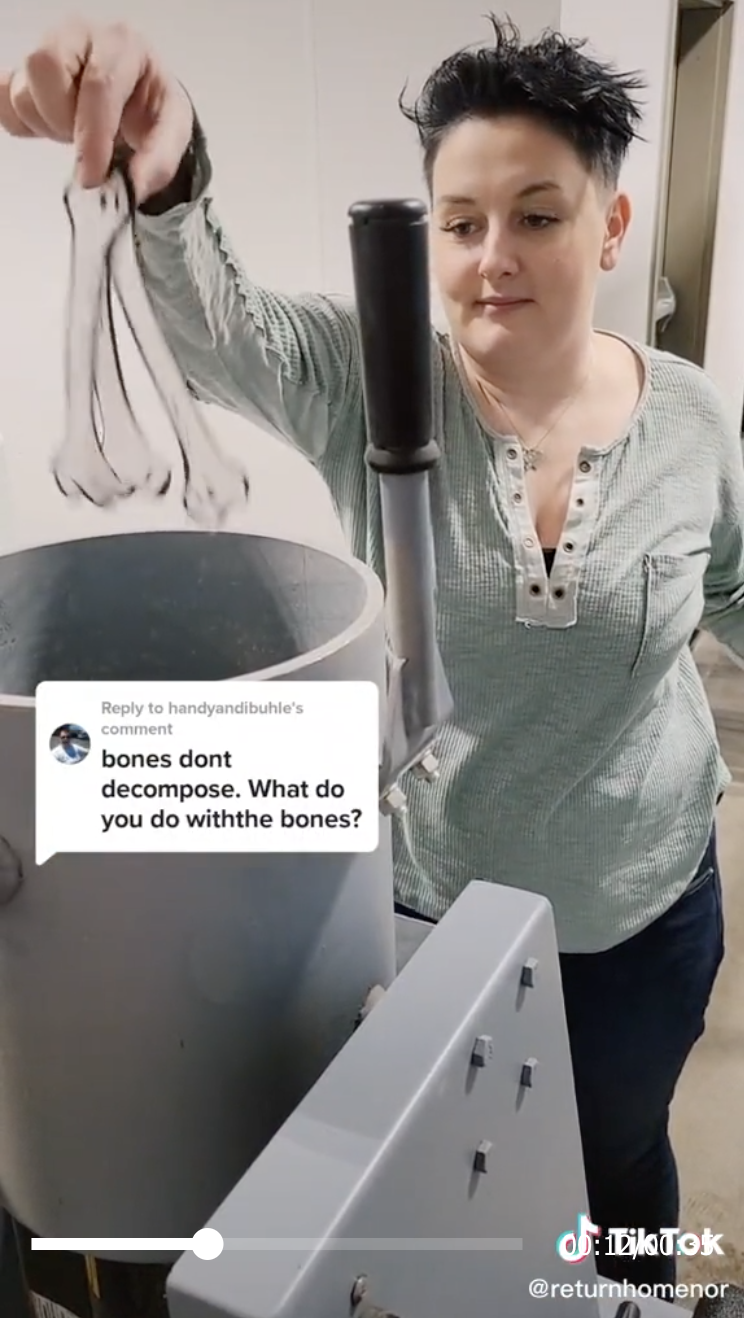
"We break the bones down into smaller parts that are represented by the pumpkin seeds. The bones are then reintroduced to the compost and left to cure for another 30 days," the TikTok says. "Microbes can completely consume that bone," Katey later clarified. "Once the soil rests and cools down, it's ready to go home to the family — so 60 days total."

Once the soil is ready, families have the option of taking home however much of it they want.

"Most of our families choose to take the entire amount of their loved ones home, which ends up being about 400 pounds of usable, rich, nutrient-dense compost. When families make this request, we put their loved ones into burlap bags because that allows the compost to continue breathing, because we are continuing the cycle of life after all."
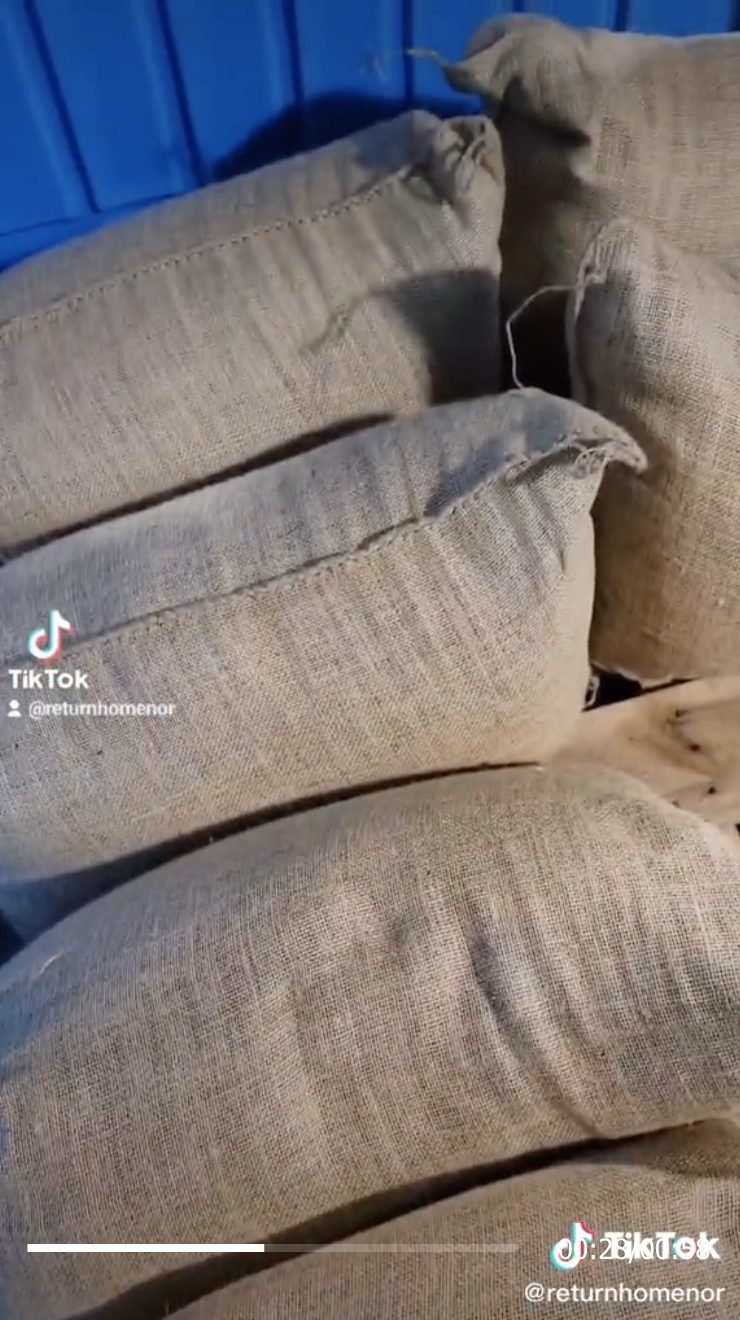
"We adorn each bag with a hand-stamped leaf that has their loved one's name and year of birth and year of death."
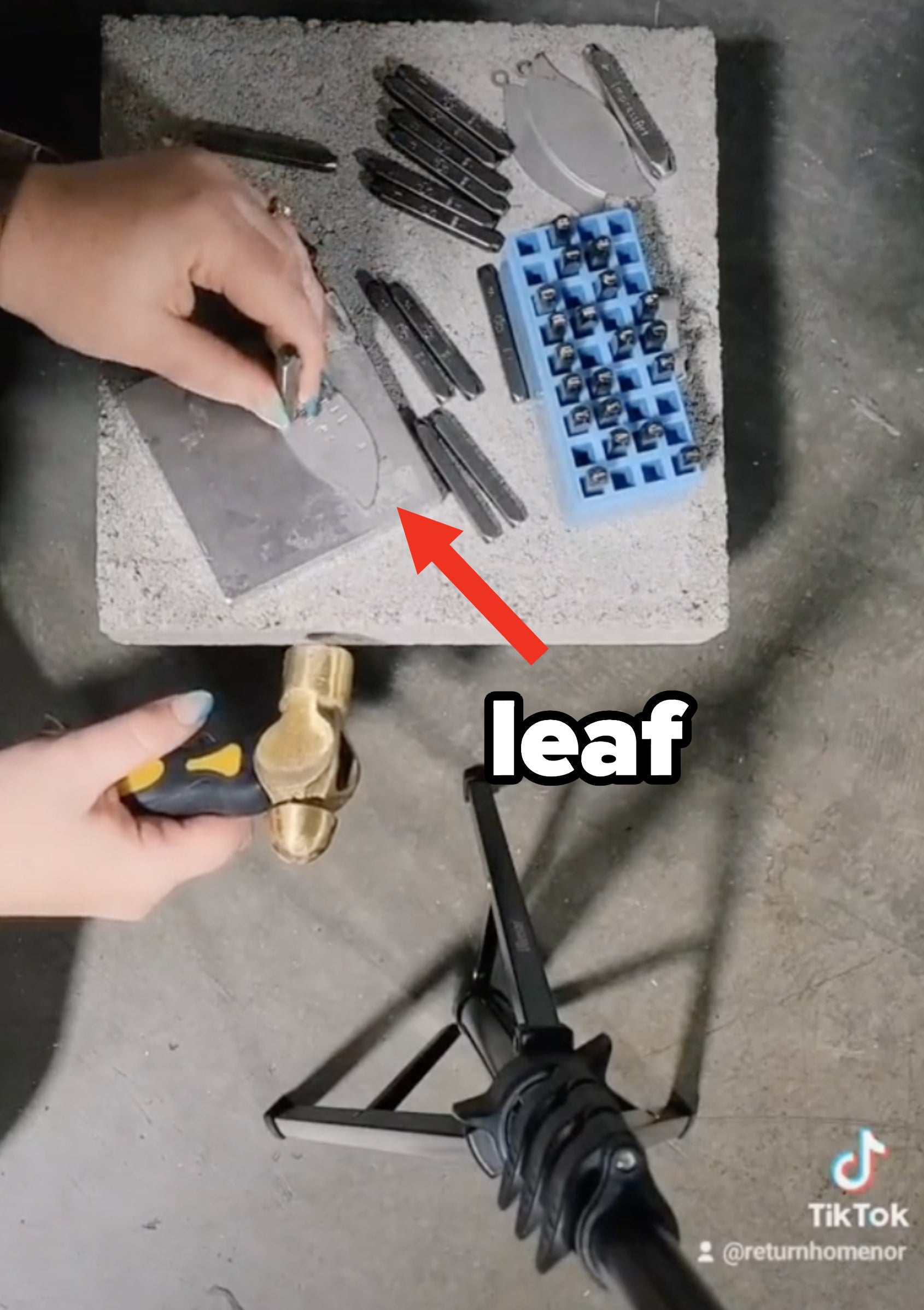
"And we give everyone a small five-pound bag that looks something like this so that they can hug and hold it."
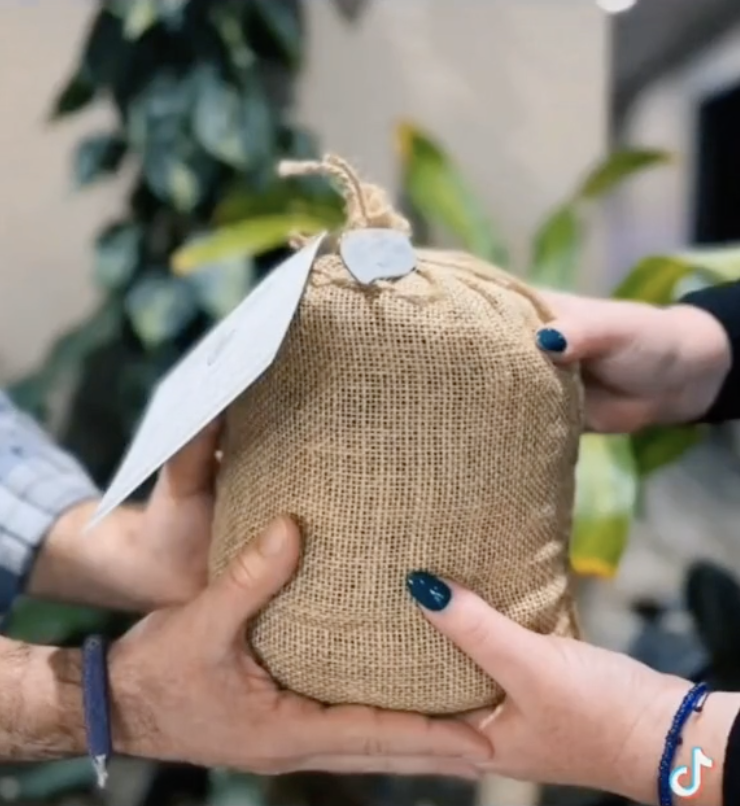
"When families don't want the full amount, we can scatter it at our woodland, which was in need of revitalization. After we started scattering people, we noticed so much new growth and new life."
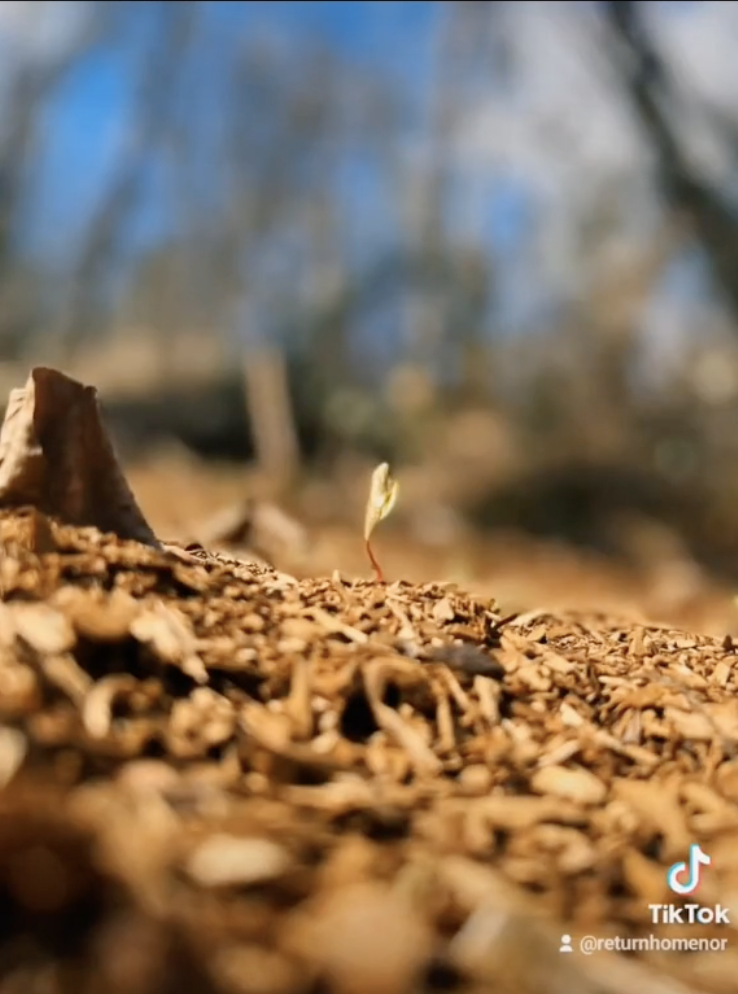
In the time since Return Home started terramation services, Katey has heard all kinds of heartwarming stories about what families do with their soil.
"We had one family — their dad passed away — and they took the whole amount of soil home," she said. "They live out in a really flat area of the state, so it's windy out there. They decided they were going to plant a barrier wall of trees around their house so that their dad would protect them forever."
"There was also a lady who was picking up her daughter, and she told me she will be sharing out portions to all of her friends and family, and her daughter [will] be taken all over the world," she added. "You can do really whatever you want with it. It's like having cremated remains, but more of it that is actually good for the planet."
According to the National Funeral Directors Association, the average cost of a funeral in the United States is $7,848. Terramation, on the other hand, would actually cost much less. "Our charge is $4,950," Katey said. "That's all inclusive of everything you need, including county fees and state fees and death certificates."
Lastly, I asked if the funeral home ever smelled. "That's a question I get all the time," Katey said. "All of our vessels are hooked up to our HVAC system that runs through a biofilter, so there's actually no smell in the air at all."
